The best Android tablets in 2021
Finding the best Android tablet for your needs can be a tricky proposition, but the good news is that there’s a whole world of options outside of the Amazon Fire tablets (even though some retailers push them pretty hard). For example, Samsung leads the field with its offerings that run pure Android and don’t lack any apps.
To help you make a more informed buying decision we’ve put together a guide that covers all of the Android tablets worth your consideration, from Samsung’s excellent Galaxy Tab line (we’re waiting on the Samsung Galaxy Tab S8 now) to Amazon’s Fire tablets, which run a variation of Android.
But while all of these tablets are worth a look, we have to dig deeper to answer the real question: which is the best Android tablet?
In our path to help you find the right Android tablet for you, we test them all in the lab, measuring battery life and performance, as well as screen quality. When it comes to app quality (something of a lingering question for even the best Android tablets) we’ve found that your decision might start by how many apps you want — and not all of these Android tablets get the same apps.
We’re currently testing the Lenovo Tab P11, as it was just announced at CES 2021. It looks to expand the range of iPad competitors, and seems similar to the excellent Galaxy Tab A7.
Those looking for an iPad alternative that will be great for typing and/or drawing should note that few come with their own stylus and even fewer have an official keyboard accessory — both of which make for surprise expenses if you’re not thinking in advance. Here are the best Android tablets.
What are the best Android tablets?
The Galaxy Tab A7 is the best Android tablet for a variety of reasons (though the Galaxy Tab S7 is a great model for demanding users). It’s at least $100 cheaper than the iPad, lasts a long while and unlike the hyper-affordable Amazon Fire 7 (more on that later), it’s got all the apps you could ask for. Plus, it’s got super-thin bezels that make most other tablets at this price look chunky. Plus, it’s got facial recognition, so you can just look at its cameras to unlock it. The Galaxy Tab S7 is the big upgrade model, with many more perks, but I would bet the $229 Tab A7 is one of the best iPad alternatives for most.
That being said, it’s hard for many to argue with the value-level pricing of the Amazon Fire tablets. The Fire 7 is snappier than any $50 tablet has any right to be, and it’s got the added value of supporting Alexa, for those who want access to Amazon’s assistant at all times. I’d personally recommend people spend almost twice as much, though, as the Fire HD 8 has amazing endurance, the likes of which beats practically every tablet up and down the list.
Looking to draw? Well, the Galaxy Tab S6 and Huawei MediaPad M5 Lite should all be on your radar, as each comes with its own stylus. Both offer USB-C charging, something that isn’t in the Fire 7 — which might matter to you if your household is already switching over to the reversible cable.
The best Android tablets you can buy today
This is the Android tablet that fans have long deserved. In the history of iPad alternatives, the Galaxy Tab A7 stands out with its lower $229 price, $100 less than the iPad. On top of that, it’s got thinner bezels than the 10.2-inch iPad and crazy 13+ hour battery life — so you can enjoy more of what you’re watching and reading for a lot longer time. And even at this price, Amazon gives you the facial recognition to unlock the device.
It’s also got USB-C charging, so you can use the same cable you charge modern phones and laptops with. And while we wish it were a tad brighter or faster, it’s got the real, unadulterated Android experience — with the Google Play app store and Google apps — so you’re not confined to web-only Gmail and YouTube.
Read our full Samsung Galaxy Tab A7 review.
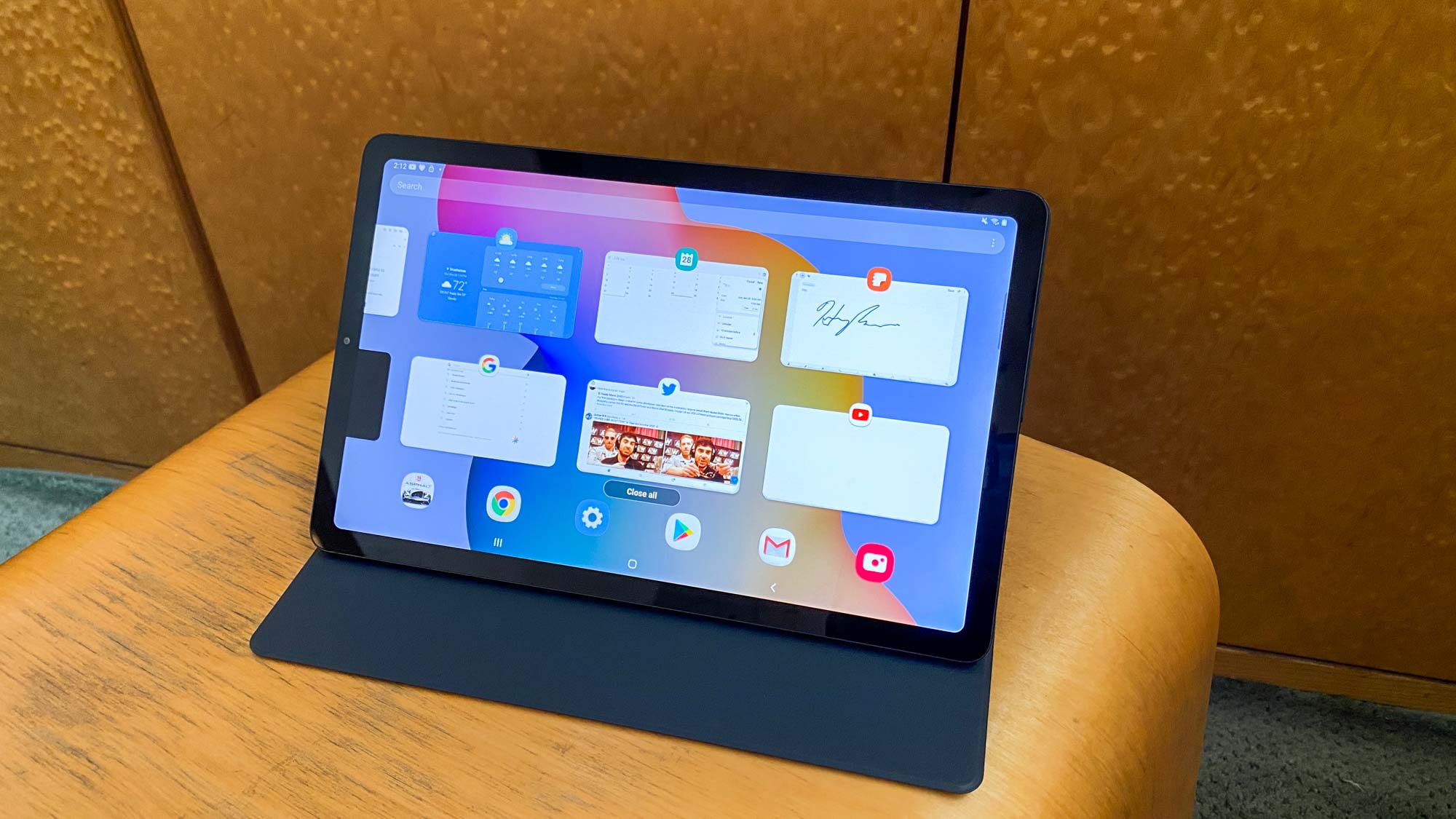
Samsung’s been fighting for room in the tablet wars, against Amazon’s ultra-affordable Fire slates and Apple’s pricier iPads, and the Galaxy Tab S6 Lite is its first undoubtable hit in a while. First off, it offers a lot of battery life — more than 12 hours on a single charge. Then, it gets the other tablet necessities right, with an elegant streamlined design, bright display and good sound. Those all add up to a solid tablet that I could binge-watch YouTube channels and the best Netflix shows on for hours and hours.
It’s also got thin bezels, that make it look a lot more modern than the aforementioned iPad (and a little like the iPad Pro). Samsung also deserves some praise for including S-Pen stylus, which offers low-latency drawing, is included by default, and it snaps to the top of the Tab S6 Lite, so you’re less likely to lose it.
In the world of Android tablets, the Tab S6 Lite does everything right, or at least as much as it can. It has all the Android apps you could ask for, which helps ensure its place as one of the best Android tablets. If only Android app developers did a little work to make their tablet apps match the quality of their phone apps.
Read our full Samsung Galaxy Tab S6 Lite review.
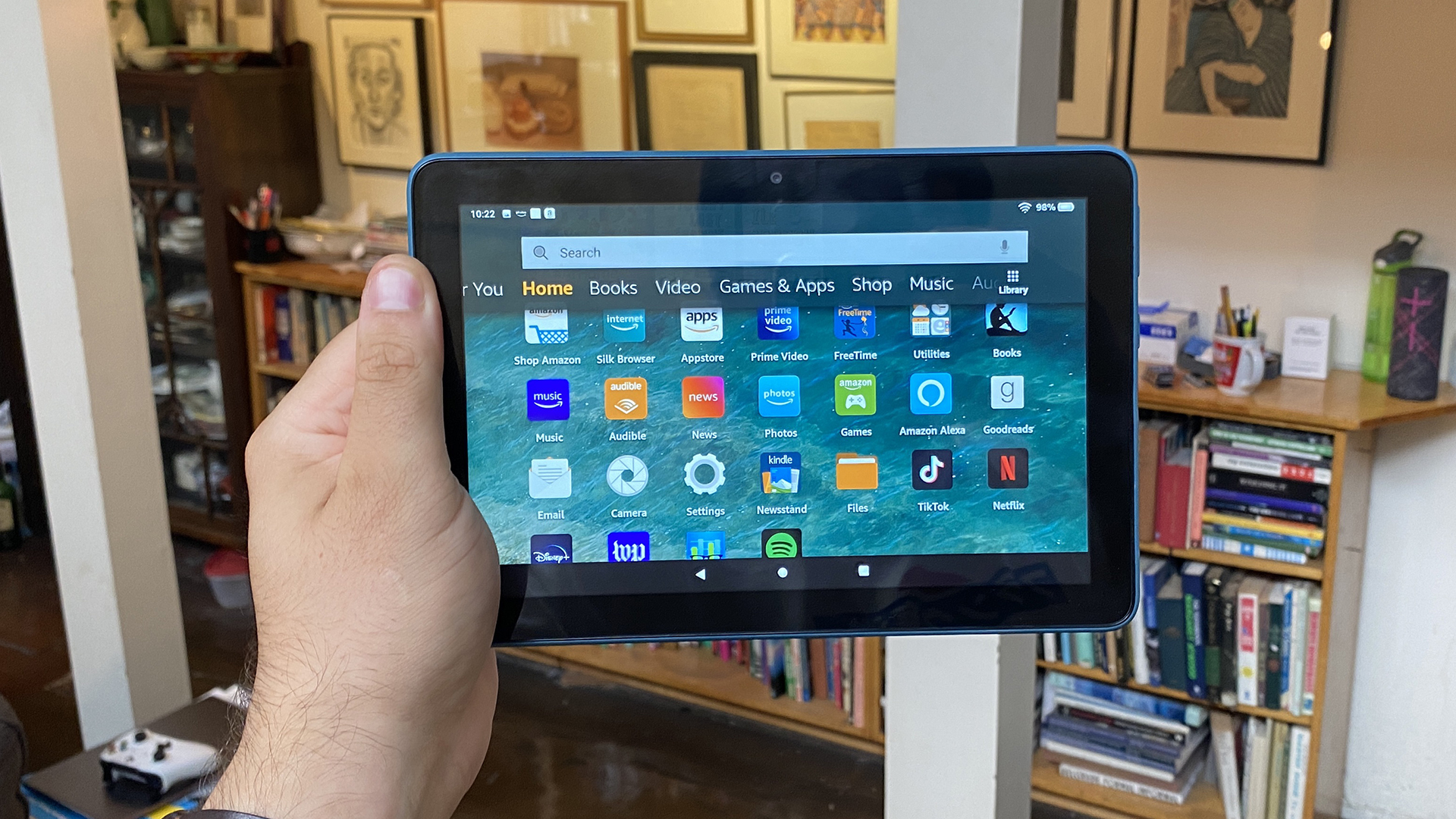
If someone asks me for tablet recommendations and they’re on a budget too tight for the iPad, I likely ask if they’re an Amazon Prime subscriber. The Amazon Fire HD 8 is the best Android tablet for those folks who love a good bargain because it gets a lot right for only $90. Its impressive 13+ hours of battery life stands out in a sea of tablets we already compliment for endurance, and, yes, you can get the reversible USB-C port at this wallet-friendly price. Even its selfie camera is pretty decent, beating the webcams in more expensive laptops.
The Amazon Fire HD 8 comes without some of the other basics you might expect when you hear “Android tablet.” The Google Play store, along with many great podcast apps, is nowhere to be found. Yes, that means the YouTube and Gmail apps can’t be used on this tablet, and you’re pushed to access the web browser versions of these standard services, in Amazon’s mostly-acceptable Silk web browser.
Read our full Amazon Fire HD 8 review.
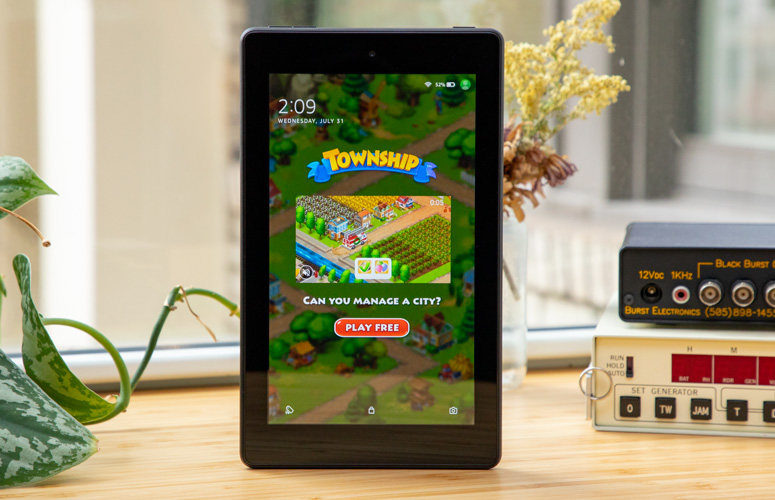
As I tested the Amazon Fire 7, I kept thinking “A $50 tablet shouldn’t be this good.” And while it’s not perfect, Amazon’s cheapest slate got a recent update that put a lot more kick under the hood with a snappy quad-core 1.3 GHz processor.
The latest Fire 7 also fixes a mistake of previous updates, allowing you to summon the Alexa digital assistant with your own voice. Yes, it should have been there since day 1 (Alexa wasn’t meant to be clicked into existence), but a $50 tablet can get away with a lot of cut corners.
Its low-low price should be a good indicator to shoppers that they shouldn’t expect iPad level features. Its sub-HD screen is good enough for younger kids streaming kids shows on Prime, but their older siblings (who’ve seen a few tablets in their time) might ask for something a little sharper.
Read our full Amazon Fire 7 review.
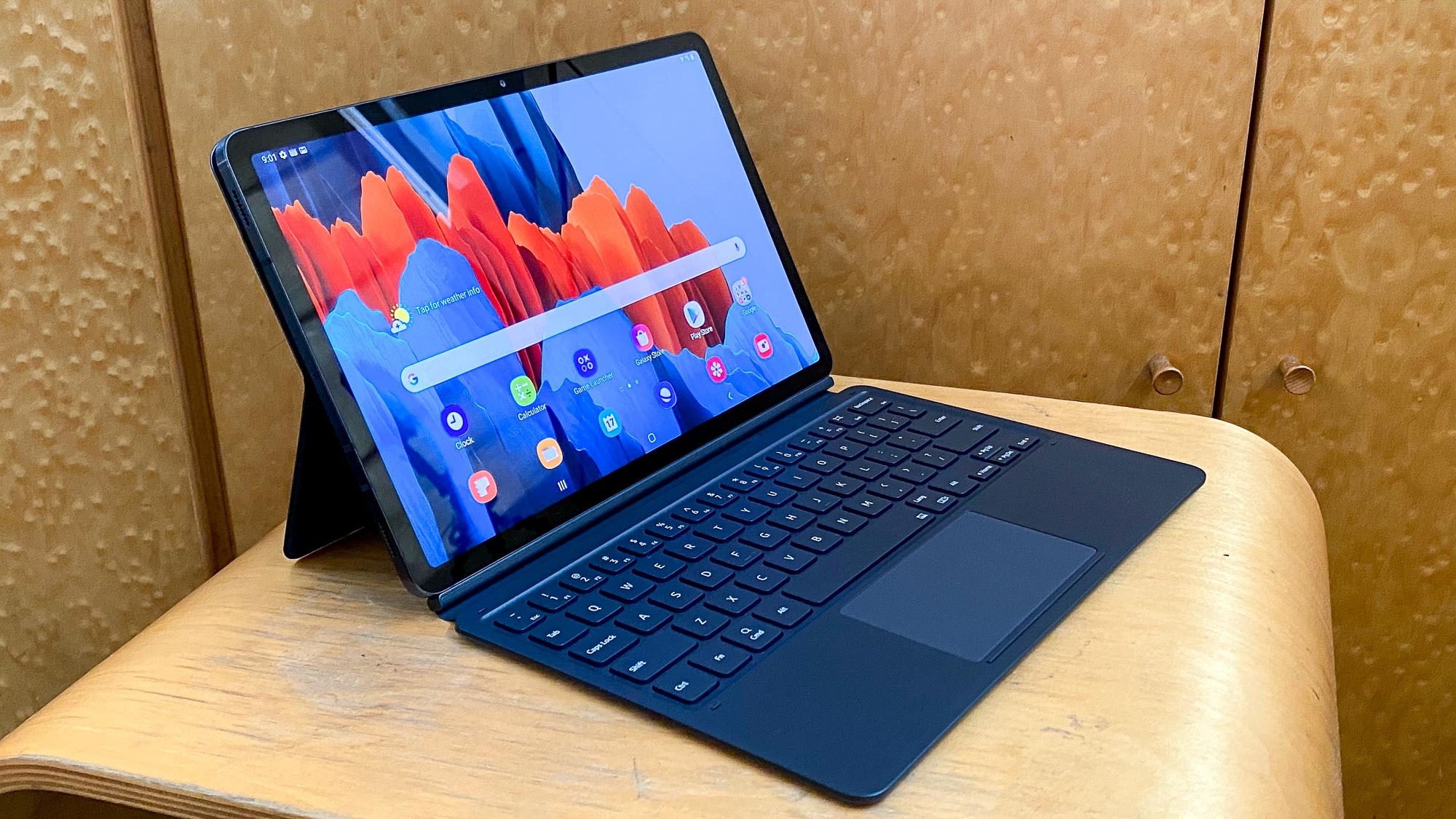
Android tablet lovers have needed the Samsung Galaxy S7 before they even knew it existed. This beautiful slate is thin, light and packs that slim bezels for an all screen aesthetic that Apple’s given users for years with the iPad Pro. The Tab S7’s screen is so bright and colorful that you’ll love to use it for your next Netflix binge watch. Oh, and it put in a time of over 13 hours on our battery life test. On top of that, you get a windowed Android app experience in DeX mode (which could use some polish) but is pretty decent for getting work done.
We want more from the Tab S7’s Book Cover Keyboard (a $199 extra add on) though. Its number keys will be too small for some and assembling its two piece design is a little annoying if you transition from laptop to tablet mode often. Also, we wish the Snapdragon 865+ had a bit more pep in its step, as benchmarks show Intel Core i5 and Apple A12Z chips running circles around it. So while some will opt for the cheaper (and still good) Android tablets, the Galaxy Tab S7 is the high-end tablet that Android users deserve.
Read our full Samsung Galaxy Tab S7 review.
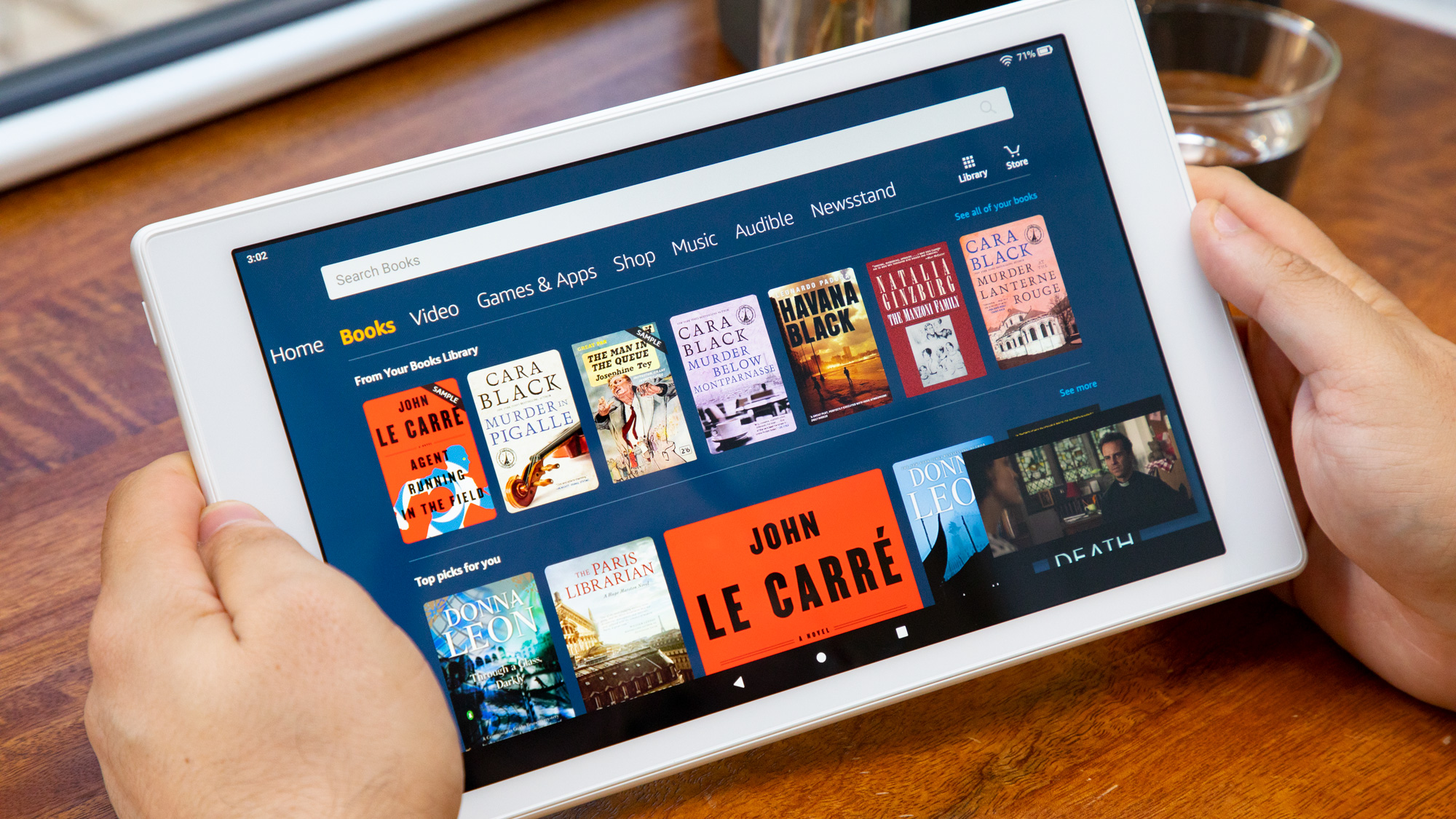
Amazon’s biggest tablet may cost more than its other versions, but its performance is strong enough that you shouldn’t scoff at its price. The 2019 Fire HD 10 packs a zippy octa-core processor and display so vivid I want Amazon to shrink it down for the Fire 7 and HD 8. And for those who live life in binge mode, that panel’s Full HD resolution is going to be a breath of fresh air. Plus, that bigger screen isn’t a detriment to battery life either, as it lasted 13 hours and 45 minutes on our battery test, practically tied with the Fire HD 8 (13:50).
Up until the Fire HD 8 recently added USB-C, this was the only tablet in Amazon’s line with the reversible charging port, so we still give the Fire HD 10 credit for having gotten there first. If your family knows every feature of its Prime membership, you need to take a look at the Fire HD 10. It’s definitely the best Android tablet from Amazon.
The only big issues are the same you find in the Fire HD 8 and Fire 7. Its interface is Amazon-first, the home screen has pay-to-remove ads, and there are zero Google apps.
Read our full Amazon Fire HD 10 review.
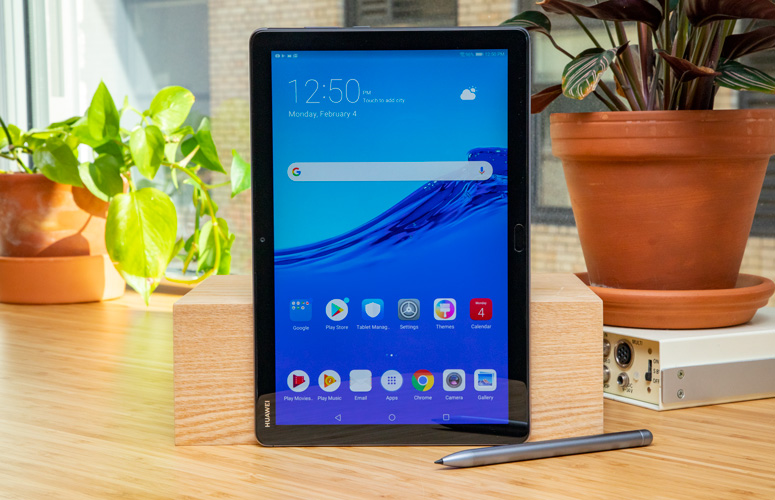
Tablets, just like phones, are only as great as the apps they can run. This is why we continue to look outside of Amazon’s hold on the tablet world and consider tablets from companies we didn’t expect to see make them. Take the Huawei MediaPad M5 Lite, a 10-inch tablet that’s priced just under the iPad.
Even at a relatively low price, Huawei includes its M-Pen for drawing on the tablet’s screen. This slate is also great for listening to music, as the M5 Lite’s quad-speaker setup can fill even a large bedroom. Other highlights on the MediaPad M5 Lite include a high-resolution screen that produces bright, vivid picture quality and a battery that lasts over 13 hours on a single charge.
The MediaPad M5 Lite looks to appeal to families with the Kids Corner, and if your child logs their fingerprints into the tablet’s fingerprint reader, they’ll always jump directly to that section when they sign in. We just wish that section were a little more thought out.
How to choose the best Android tablet for you
When it comes to picking the best Android tablet for you, start by thinking about the apps you want. Yes, battery life and performance are so similar across many of these tablets that you can easily cross off half of this list by thinking about if you need your next Android tablet for more than just Netflix and Spotify.
Those who want every single application on their Android phone should probably look away from the Amazon Fire tablets, as those require jumping through hoops (and disabling security protection features) to get Gmail or any of the Google apps as apps. If you don’t need those apps on your tablet, or could stand to use older, less-than-stellar versions of those applications in a web browser, then you can consider the Fire tablets.
If you want all of the apps, you have three questions, each with its own answer. Are you mainly going to be consuming content? Get the Galaxy Tab S6 Lite. Looking for a machine where you can crank out a Word document and possibly replace your laptop? The Galaxy Tab S6 is right for you. Looking for a tablet to share with the family? Huawei’s MediaPad M5 Lite is your best bet.
Those OK with the limitations of Amazon tablets should grab a Fire 7 for less demanding users, and the Fire HD 8 if they’re shopping for folks with slightly higher standards. And if you’re looking for the best of the budget bunch, the Fire HD 10 is right for you.
How we test Android tablets
The first thing we do, to separate the great tablets from the jokers, is test all their different facets. Our web-surfing based battery test times how long a tablet can browse the internet for, with its display set to 150 nits of brightness. But in order to figure out what percentage of brightness equals 150 nits, we perform a series of display tests to measure how colorful the panel can get (measured with its sRGB output number) as well as how bright it can get. Then, we run benchmark tests on said tablet, including the latest version of the Geekbench general performance benchmark.
Another thing we do to evaluate Android tablets is check out the app store to see if you’re getting a true Android experience, or some company’s vision thereof. The latter is a major disappointment — though we don’t expect anything different from Amazon at this stage. On tablets with parental controls settings, we try and find the loopholes in said limitations, to find red flags before your kids can.
Then, we just use the tablets like we would if we owned them. Opening tab after tab and app after app to see if we can multitask without hiccups. We also watch YouTube videos because the color output (sRGB) and brightness (nits) measurements don’t tell the whole story. Only through all of these tests, can we be sure that we’re giving you a complete assessment of a tablet’s value.
For all the latest Technology News Click Here
For the latest news and updates, follow us on Google News.
